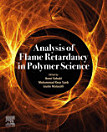Flame Retardant Selection for Polymers
આ ઇ-પુસ્તક વિશે
લેખક વિશે
Prof. Henri Vahabi received his Ph.D. in Materials Science from the University of Montpellier, France, in 2011. He is currently a Full Professor at the University of Lorraine, France. His research is focused on thermal degradation, flame retardancy of thermosets and thermoplastics, and the development of innovative flame-retardant systems. Prof. Vahabi has authored over 170 articles in ISI-indexed journals and has edited four books. Furthermore, he serves as a committee member of the "Fire Group" within the Chemical Society of France and holds the position of Associate Editor for the Polymers from Renewable Resources journal.
Dr. Mohammad Reza Saeb received his PhD in 2008 from Amirkabir University of Technology (Iran) and is currently a Professor at the Department of Pharmaceutical Chemistry, Medical University of Gdańsk (Poland). His research focuses on advanced materials and manufacturing processes, including polymer blends, composites, and nanocomposites, with particular emphasis on biomaterials and flame-retardant polymers, as well as the recycling and upcycling of polymer and biowastes. He has authored or co-authored more than 500 articles in high-impact journals and is currently serving as the Editor-in-Chief of Polymers from Renewable Resources, published by SAGE.
Dr. Günter Beyer received his PhD in Organic Chemistry from the Technical University of Aachen, Germany, in 1984. Since then, he worked at Kabelwerk EUPEN as head of material development and the fire testing station of cables. In 2016 he founded FIRE & POLYMER, a consulting company. His main research interests include flame retardancy of cables and nanocomposites. With more than 30 years’ experience in polymer science and technology he is active in the field of flame retardancy, nanocomposites and reactive extrusion. He received in 2003 and 2004 the Jack Spergel Memorial Award by IWCS for his fundamental and industrial developments of nanocomposites as an innovative new flame retardant system for the cable industry.





